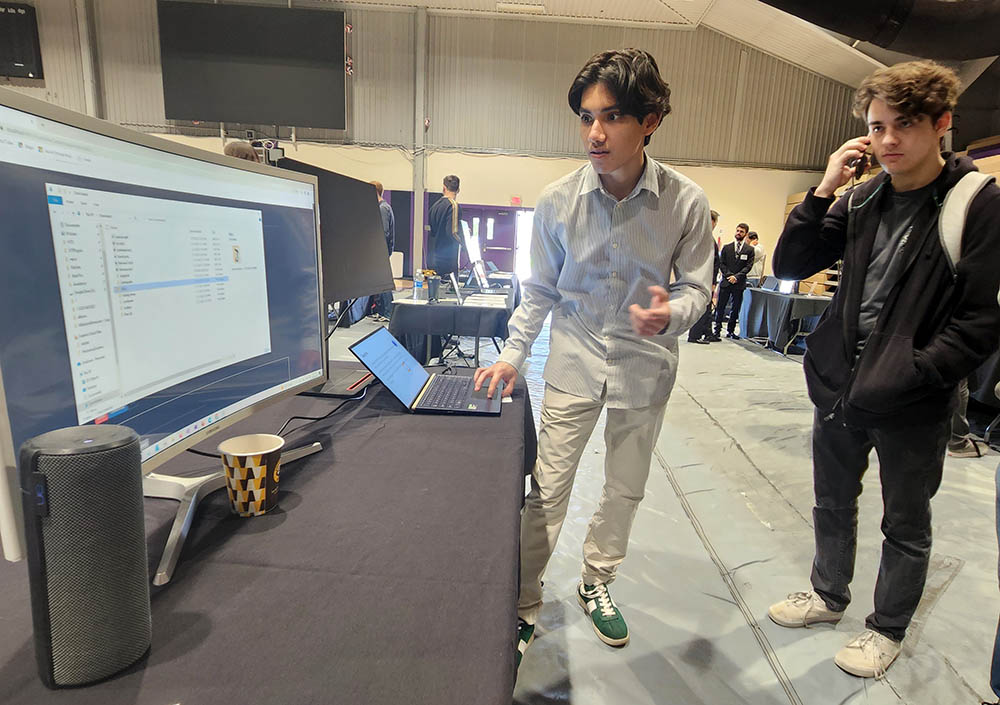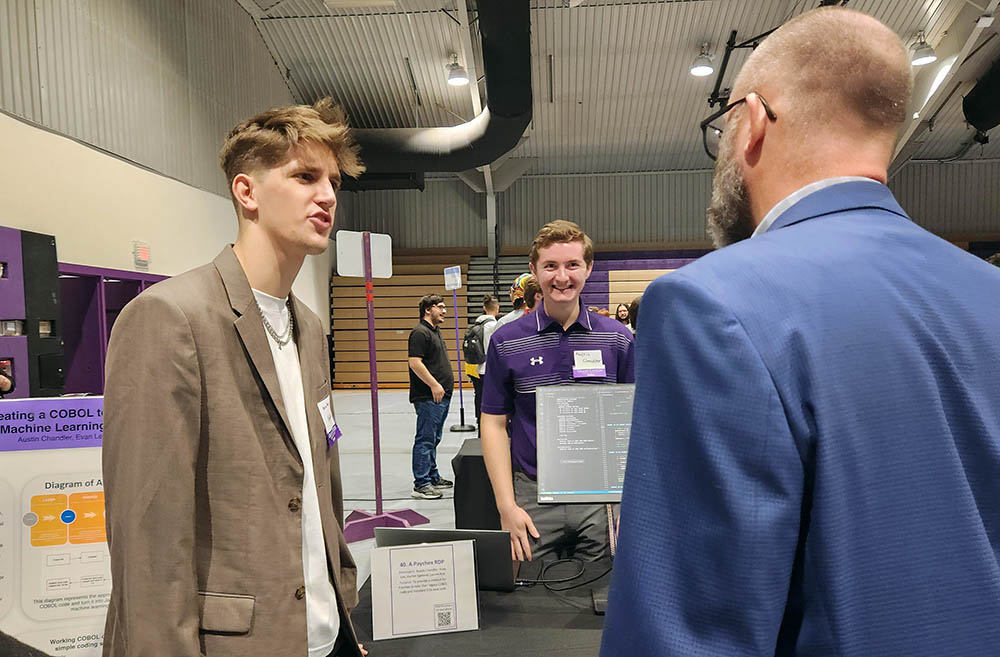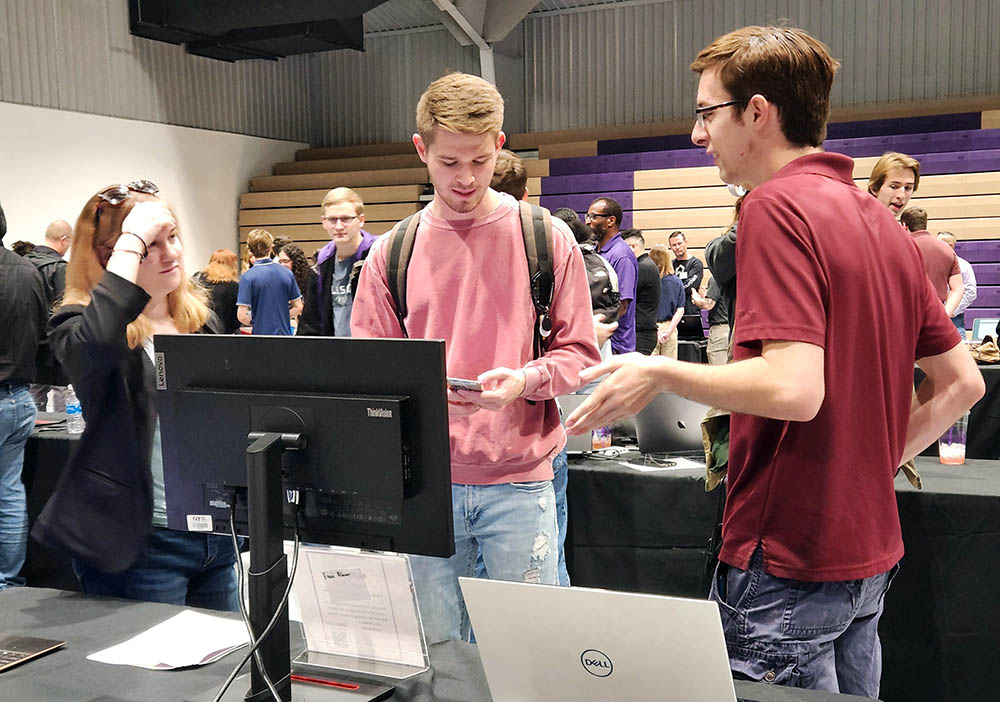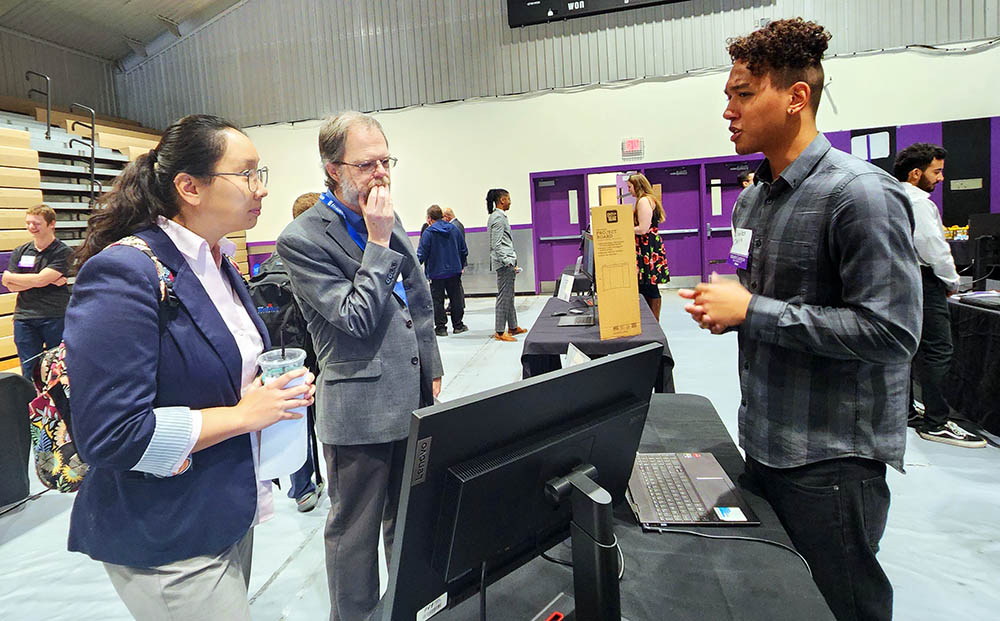
Grand Canyon University software development major and music producer Alex Vergara couldn’t find a music-streaming service that hit the perfect note, so he created BeatsTree.
Like with Spotify or BeatStars, users can upload their songs, but unlike other music-streaming services — and what makes BeatsTree so different — is that users also can download those music files, which are stored in the cloud.
“I’m a producer and make my own beats. … I wanted to put my name out there,” Vergara said of the seed of inspiration behind BeatsTree. It’s a project he started working on over the summer, even before his capstone class started in September.
“I’m not using any API’s (application programming interfaces, which allow programs to communicate with each other). There’s nothing prebuilt. Everything’s built from scratch … all of it is built by hand by me,” he said.
The learning curve was huge for him in working on this project, he said. Not only did he refine his skills in programming language C#, but he dove headfirst into cloud computing program Microsoft Azure over the past few months.
“It was HUNDREDS of pages of documentation I had to filter through,” he said of searching through Azure to find what he needed to build BeatsTree.

Vergara’s music-streaming service was one of approximately 60 projects on display Thursday in Antelope Gymnasium as part of the end-of-semester Technology Capstone Showcase, organized in partnership with Strategic Employer Initiatives and Internships. It’s when seniors present their capstones, which are meant to showcase all they’ve learned in their academic career at GCU.
The event, featuring the College of Science, Engineering and Technology’s software development, computer science, information technology and Research and Design Program students, welcomed industry professionals and advisory board members who got to see firsthand the tech savvy of the University’s students.
We used to be in a hallway, then expanded into a classroom, and now it's gotten so big that we moved it into the gym. It's a good problem to have.
Technology Project Manager Katherine Urrutia on the growth of the Technology Capstone Showcase
The showcase has grown exponentially since it made its debut in 2016.
“We used to be in a hallway, then expanded into a classroom, and now it’s gotten so big that we moved it into the gym. It’s a good problem to have,” said Katherine Urrutia, Technology Project Manager.
Visitors could view everything from VR Arcade (developers: James Ridley and Dylan Olthoff), which re-creates the throwback ’80s arcade experience through virtual reality; to HikingTracker (developer: Connor Rolstad), which includes a where-you’ve-hiked map and gives hikers a way to track data, such as elevation gain; to the Collection Tracker (developer: Nate Kelley), which gives Pokémon enthusiasts a way to track their card collection.
Visitors also could scan in a QR code at each project site to give their feedback.

While the capstone presentations usually feature seniors, software development freshman Joseph Abraham was invited to participate as one of several representatives of the University’s Research and Design Program. Abraham is part of the Computational Artificial Intelligence/Machine Learning & Robotics Lab, working under the mentorship of Dr. Jevon Jackson.
Abraham’s project, Fake News Detector for Twitter, uses machine learning to ferret out false information. Abraham is looking through news about Elon Musk of SpaceX, Tesla and now, Twitter, fame to teach the program what statements are objectively true or false. He aims to go through 20,000 pieces of data while the program is in its “learning phase.”
“Three months ago, I didn’t know how to code,” Abraham said of his project, which he will continue to develop as he moves through his years at GCU. “I’m loving it.”
Computer science students Katelyn Hochstetler and Evan Kliewer, who worked with Orbis Education, developed a virtual reality simulation using Microsoft HoloLens technology. It allows nursing students to practice their assessment of newborns and perform other tasks, such as holding a virtual baby. The simulation is meant to be an intermediary teaching tool, sharpening nursing students’ skills between the classroom and the time they start to interact with real newborns.
“It just gives them more experience,” Kliewer said.

Information technology students Luke Levene, Brooks Birkinbine, Jerry Connelly and Victor Perez shared the details of their nutrition web app, Honest Nutrition.
What makes it different from other nutrition apps, Levene said, is “it shows you a broader range of your data.” So instead of showing users a week’s worth of what they’ve eaten, it goes back further to track their nutrition habits. The app also can recommend foods based on your eating history. It knows if you’re lacking the recommended dairy for the day, for example. Users also can set personal goals on the app, which tells you if you’ve gone over or under your personal calorie goal.
Student developers Melanie Spence and Elijah Olmos developed a software that uses Web3.0 blockchain technologies to keep track of attendance. Blockchain records transactions organized in blocks in a peer-to-peer network. The software would be something professors could use in class to keep track of attendance or that organizations around campus could use so they know who attended their event.
Olmos, who demonstrated the technology by scanning a card onto a raspberry pi computer, said, “What I learned the most about was blockchain,” a newer technology he and Spence wanted to add to their academic arsenal.

Software development senior Charles Osiris developed MediHealth, a phone app that reminds users to take their medicine. He got the idea for the project because his mom is on medication and tends to miss taking a pill or two.
“My biggest challenge was to launch it on the mobile phone. I had to update the API,” which then caused problems that he scrambled to fix, Osiris said.
Leini Santos, product designer for Goodwill of Central and Northern Arizona, was one of about 50 industry professionals and advisory board members who attended the event.
“We’re potentially hiring for a new developer in January,” she said.
She’s hoping they’ll find a student developer from GCU who will hit that perfect note.
“Thinking of all the building blocks we’ve done, this is the fruition,” said Assistant Dean of Technology Brandy Harris, who looked out into Antelope Gymnasium and saw the sea of tables and students dressed in their presentation best. “We’ve just had tremendous support from our industry partners, who have come back and helped us refine (what we do) even more.
“It’s been wonderful.”
GCU senior writer Lana Sweeten-Shults can be reached at [email protected] or at 602-639-7901.
****
Related content:















